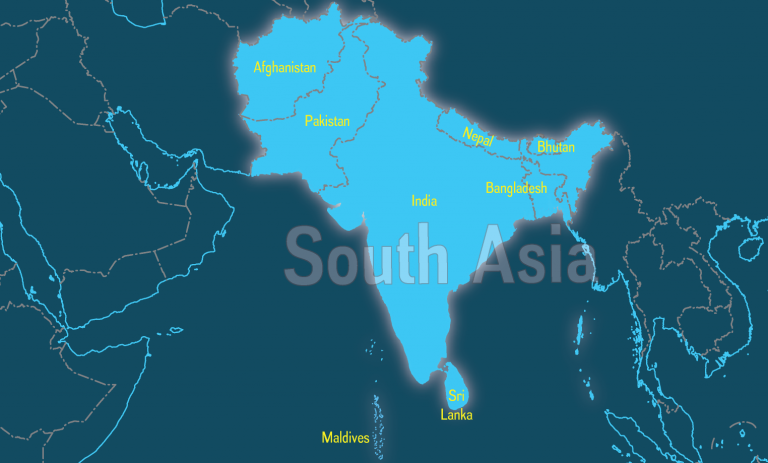
 Let’s not forget South Asia is a geographical notion, and as such straddles political divides as well cultural ones. The term is also neutral with regard to time and people – South Asia was what it was before any humans lived there (since the Indian subcontinent collided with Asia, that is)
Let’s not forget South Asia is a geographical notion, and as such straddles political divides as well cultural ones. The term is also neutral with regard to time and people – South Asia was what it was before any humans lived there (since the Indian subcontinent collided with Asia, that is)
By Nazarul Islam
The largest Continent on our planet credits itself with a disproportionate share of global fame, for countries grouped together to form a noisy neighborhood, known as ‘South Asia’. In school text books, I rarely got to read about North Asia. The ‘typical-neighbors’ identity has rustled many Indians to dislike the expression “South Asia” and the halo projected around it. They feel this has diluted the central role played by India on the subcontinent, both historically and in the present context.
Then again, some people in countries like Pakistan and Nepal are allergic to the overuse of the word “India,” feeling that it indicates India’s overgrown ambitions to dominate the region – both in the present as well as in the past.
One of the best instances of such identity skirmishes are the recurrent discussions between Indians and Nepalese over the birthplace of Buddha. The people of Nepal are often unhappy when somebody claims that Buddha was born “in India.” His birthplace, now called Lumbini, is located in Nepal (even if just a stone’s throw from the border with India). There was no India, they point out – in the sense of a political entity, a sovereign state called India – when Buddha was born, several centuries before Christ.
But this line of argument is a back-and-forth swinging blade that leaves no survivors. The modern state of Nepal also did not exist at the time of Buddha.
If we really need to be precise historically, and if we need to refer to political entities, then Siddhartha Gautama, later titled Buddha, was born in a place called Rumminidei in the territory ruled by the clan of Shakyas (who formed an independent political entity) and the same Rumminidei was identified with Lumbini in the territory of the present-day Republic of Nepal. It is easy to understand why, outside the world of academia, we often cannot afford such lengthy explanations and must resort to simplifications.
But even this is just the starting point of such challenges. Suppose we have thus pin-pointed Buddha’s birthplace in space, time, and in political terms. But given that he spent most of his life in present-day northern India, where he searched for knowledge and salvation, taught, and eventually died, what was the territory he lived in? India? South Asia? We could certainly use the latter term, as it is geographically correct and thus neutral — but it is also very general. It does not tell us anything valuable about the cultural milieu in which he operated.
Buddha’s teachings were a part of Indian philosophy and they built on and referred to (and sometimes rebelled against) earlier Indian thought and religious customs. The Buddhist canon was preserved in Indian languages (mostly in Pali, to some degree also in Sanskrit). If, instead of this, we would say that these were “South Asian philosophy” and “South Asian languages,” such descriptions, even though theoretically correct, would fail to explain anything, to paint any context, to understand linkages.
Is there a good solution to this? It depends on the case, but the above instance of Buddha is as much a review of some naming challenges as an indication of how we can solve them.
Let’s not forget South Asia is a geographical notion, and as such straddles political divides as well cultural ones. The term is also neutral with regard to time and people – South Asia was what it was before any humans lived there (since the Indian subcontinent collided with Asia, that is).
____________________
About the Author
